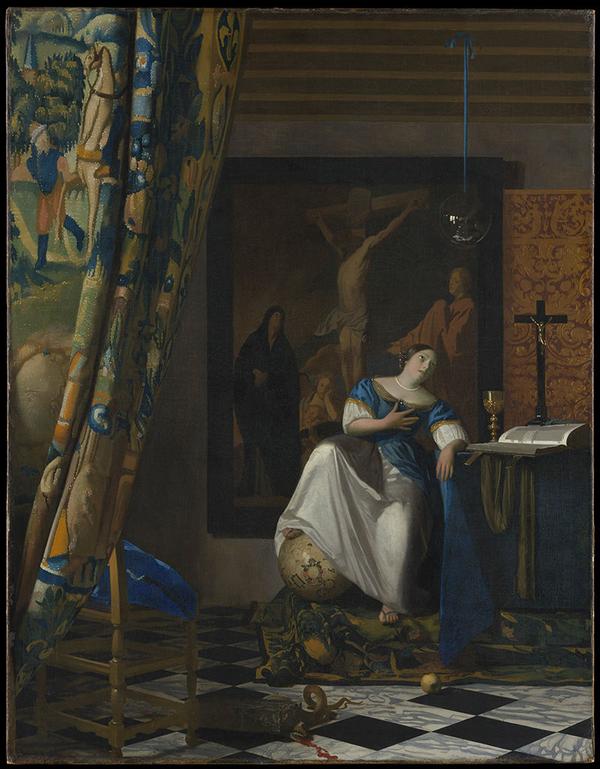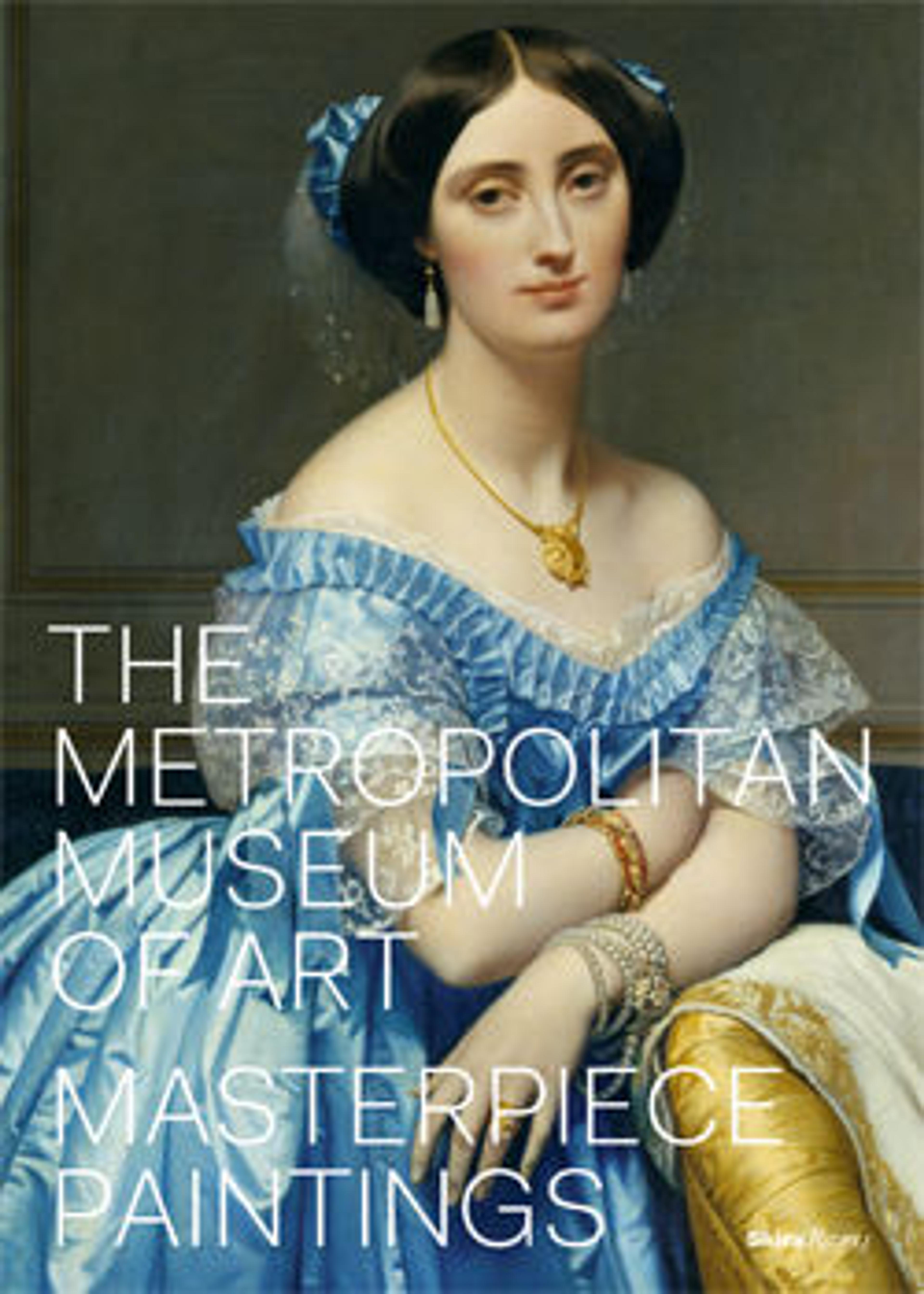Allegory of the Catholic Faith
This picture, made at a moment when public celebrations of the Mass were forbidden in the Dutch Republic, draws on the complex language of allegory to depict the triumph of the Catholic Church. A woman, representing the church itself, places one foot atop a globe, while in the foreground the cornerstone of the church crushes the serpent of evil. Vermeer converted to Catholicism before his marriage, and this painting, which includes a table laden with chalice, missal, and crucifix, may also refer to the celebration of the Mass in "hidden churches" within private homes. The Crucifixion scene in the background is based on a painting in Vermeer’s collection by the Flemish artist Jacob Jordaens.
Artwork Details
- Title:Allegory of the Catholic Faith
- Artist:Johannes Vermeer (Dutch, Delft 1632–1675 Delft)
- Date:ca. 1670–72
- Medium:Oil on canvas
- Dimensions:45 x 35 in. (114.3 x 88.9 cm)
- Classification:Paintings
- Credit Line:The Friedsam Collection, Bequest of Michael Friedsam, 1931
- Object Number:32.100.18
- Curatorial Department: European Paintings
Audio

5242. Johannes Vermeer, Allegory of the Catholic Faith
NARRATOR: Among the five paintings by Vermeer in The Met’s collection, curator Adam Eaker considers this one a bit of an outlier.
ADAM EAKER: I’m often told by people on tours, or when showing visitors around the Museum, that it's their least favorite Vermeer, or it's the one Vermeer that they don’t like. There is something challenging about this image.
NARRATOR: The scene holds a series of what can be read as coded messages: the perseverance of the Catholic Church at a time when Catholics were not allowed to conduct mass in public. In the seventeenth century, a literate viewer would have quickly understood the painting’s symbolism.
ADAM EAKER: The church itself is embodied by this woman who has her foot atop a globe. In the foreground, you see the cornerstone of the church crushing evil, represented by the serpent. And then you have this table that’s actually prepared for a mass, so you have a missal, a chalice, a crucifix. The apple lying on the ground in front of the figure of the church refers to the apple of knowledge that brought about the fall of man.
NARRATOR: This painting was personal for Vermeer. He converted to Catholicism in order to marry a woman from a prominent Catholic family. Historians think he created this painting for himself or possibly for a wealthy Catholic client. This peek behind a tapestry reveals something clandestine, perhaps a hidden church in a Dutch home.
ADAM EAKER: We really seem to be glimpsing a very strange kind of tableau within Vermeer’s own home. What I love about this painting is that Vermeer is taking a very abstract, international language of allegory, and grounding it in everyday life.
Listen to more about this artwork
More Artwork
Research Resources
The Met provides unparalleled resources for research and welcomes an international community of students and scholars. The Met's Open Access API is where creators and researchers can connect to the The Met collection. Open Access data and public domain images are available for unrestricted commercial and noncommercial use without permission or fee.
To request images under copyright and other restrictions, please use this Image Request form.
Feedback
We continue to research and examine historical and cultural context for objects in The Met collection. If you have comments or questions about this object record, please contact us using the form below. The Museum looks forward to receiving your comments.
